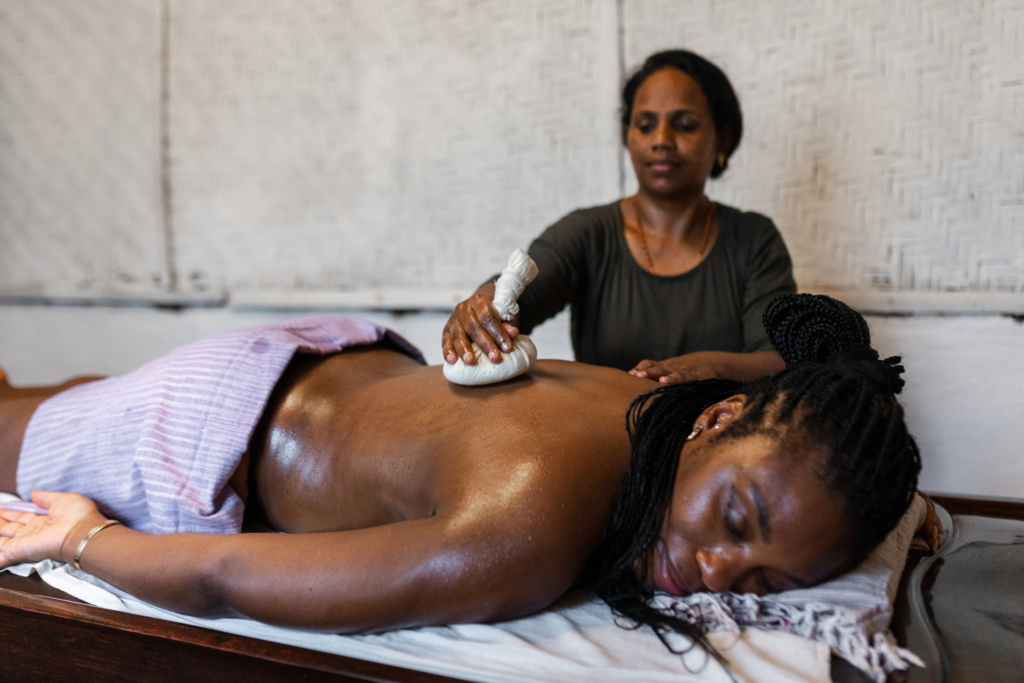
Swedan Karma (fomentation therapy) is one of the three preparatory procedures, which is employed before starting any of the five cleansing procedures. Swedan Karma or diaphoresis is advocated only after employing proper oleation. A person undergoing this therapy is given heat either by using a decoction of medicinal herbs or by applying indirect heat to the body, in the form of warm clothing or keeping the patient in a warm cabin or partially open box. Properly employed fomentation softens and melts the body toxins so as to efficiently expel these with the assistance of the main purification procedures.
Types of Diaphoresis
Diaphoresis is divided into following main types
- Thermal (Saagni) and non-thermal (Niragni)
- Smooth (Singdha) and dry (Ruksha)
- Mild (Mrudu), moderate (Madhyam) and Strong (Tikshna)
- Local (Ekanga) and whole body (Sarvanga)
Indications
Persons who suffer from coryza, asthma, cough, hiccoughs, earache, headache, pharyngitis, paraplegia, hemiplegia, arthritis, facial paralysis, sciatica, backache, joint disorders, edema, constipation, urinary obstruction, and spasmodic pains, etc. are given hot fomentation.
Contraindications
Alcoholics, pregnant woman, malnourished persons, diabetics, persons suffering from liver diseases, persons having cataract, and very young and very old patients should not be given diaphoresis.
Procedure
As per the severity and site of the disease, the type of diaphoresis is advocated. External oleation therapy or massage is mandatory before a patient is given diaphoresis. Diaphoresis is given by various methods. Local diaphoresis is given by applying a poultice (paste) of medicinal herbs or by kettle steam diaphoresis. In chronic diseases, whole body diaphoresis is given either by giving steam bath of medicated decoctions, or by making the patient lie down on a specially designed table.
Special precautions
Very mild diaphoresis should be employed to the delicate parts like testes, eyes or heart, for a very short time. Also, blood pressure, pulse and respiration chart is maintained. Precautionary measures should be taken to overcome any dehydration caused by excessive perspiration.
Signs and symptoms of patient having proper diaphoresis
- Patient feels cool due to excessive perspiration.
- Pain is subsided.
- Joints and body stiffness is reduced, making all the body movements more flexible.
Complications of improper diaphoresis
- Coma, giddiness and weakness.
- Excessive thirst and dehydration.
- Burning sensation of the body.
Functions of Diaphoresis
Body flexibility is increased after oleation and diaphoresis treatment, and helps in eliminating the toxins completely. Swedan benefits the patient by relieving him of stiffness and pain.
Post Fomentation Regimen
Immediately after completing fomentation therapy, it is advisable to rest, avoid exposure to the cold, bathe in warm water, and rest in adequate fresh air. Liquids and easily digestible food should be consumed in moderate amount. If induced emesis has been recommended, it should be done the following morning. If purgation is required, it should be done two days after the fomentation is completed. Nasal cleansing, a medicated colon therapy or bloodletting can be done immediately after fomentation.
